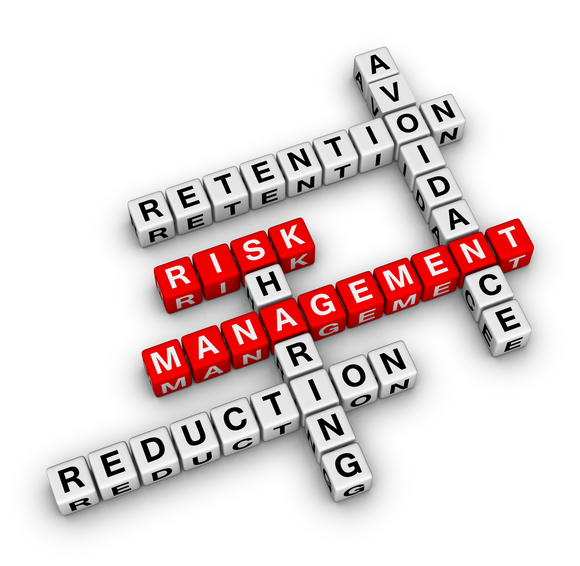Accounting
Focus on Risk Management Helps Companies Achieve Better Growth
While 73 percent of executives feel outside risks are on the rise, companies are generally not meeting these increased risks with improved risk management. Only 12 percent of responding companies demonstrated qualities that marked them as true risk ...
Apr. 15, 2015

Nearly three-fourths of financial executives sense more risks to their companies, according to a new report from PwC US.
The study, called Risk in Review: Decoding Uncertainty, Delivering Value, found that while 73 percent of executives feel outside risks are on the rise, companies are generally not meeting these increased risks with improved risk management. Only 12 percent of responding companies demonstrated qualities that marked them as true risk management leaders.
According to the report, which draws on a survey of more than 1,200 senior executives and board members, companies that lead in risk management take a holistic view of risk and involve risk management in the business at a strategic level. Instead of seeing risk management as slowing their business, these companies view it as an enabler of performance and growth—and they have the numbers to back that up. Over the past three years, 55 percent of risk management leaders recorded increased profit margins, and 41 percent achieved an annual profit margin of more than 10 percent.
“Risks are increasing dramatically and executives are constantly faced with making decisions to protect their businesses, while also trying to improve their financial performance,” said Dean Simone, leader of PwC’s U.S. Risk Assurance practice. “By integrating risk management into the business life cycle, these two objectives can easily come together to work in unison. Developing an effective strategy requires investment, but the payoff and competitive advantage can be enormous.”
According to PwC’s survey, risk management leaders distinguish themselves in four key areas:
1. Risk management leaders understand how risks interconnect and impact business
PwC’s study found that 70 percent of risk management leaders say they can see how risks interconnect and cascade, compared to only 23 percent of non-leaders. They are also far more likely to compile an aggregated view of risks when making business decisions (73 percent vs. 27 percent), giving them a clear and realistic understanding of operational issues and market opportunities.
2. Risk management leaders have a strategic understanding of their risk appetite and are willing to take risks
Empowered by a risk-informed perspective, risk management leaders are more likely to articulate a high or very high appetite for risk. Almost 90 percent of risk leaders are increasingly taking a risk-enabled approach to growth, examining both the risks and opportunities to help them understand where they should focus their efforts.
“Analyzing and assessing how different business risks affect one another is an essential step in achieving a holistic and accurate risk management perspective,” said Brian Schwartz, PwC’s U.S. Performance Governance, Risk and Compliance Leader. “Undertaking a systematic review that determines what aggregated level of risk a company is willing to take on – and ensuring that all business units understand those limits – remains a central tenet of risk management leadership.”
3. Risk management leaders are more aligned across business units
The vast majority of risk leaders (90 percent) say their risk management program is fully or very aligned with their company’s strategic planning process, compared to just 36 percent of non-leaders. Risk leaders also demonstrate greater cross-functional alignment, particularly with finance (93 percent vs. 58 percent), internal audit (95 percent vs. 65 percent) and corporate compliance (93 percent vs. 55 percent). And, they’re far more likely to involve risk analysis in the decision-making process (67 percent vs. 43 percent of non-leaders). All this alignment helps risk leaders see the impact of risk across the organization, empowering them to act quickly to neutralize threats and seize opportunities. In today’s business environment, that kind of speed is crucial.
“Business leaders see the landscape today as one of both threat and opportunity, in roughly equal proportions,” says Dennis L. Chesley, PwC global risk consulting leader. “To survive and evolve in this environment, companies need to prepare their entire organizations to take advantage of big shifts ahead of the competition.”
4. Risk management leaders apply more sophisticated techniques
Among risk management leaders, 46 percent report spending more time calculating and preparing for risk than reacting to it, versus just 21 percent of non-leaders. They also use a variety of tools to effectively integrate their analysis, including identification and forecasting of emerging risks (96 percent vs. 59 percent), horizon scanning and early-warning indicators (81 percent vs. 33 percent) and building organizational resilience to risk (88 percent vs. 42 percent). Meanwhile, new analytics systems make it significantly easier to bring disparate data together to create powerful insights.
“When executives have the power to collect the right data and synthesize this data into actionable intelligence, they are empowered with a deeper understanding of their business and of the drivers that impact performance,” says John Sabatini, leader of PwC’s risk and compliance systems and analytics practice. “We can now do things that weren’t possible a decade ago. This allows for much better decision-making.”
Risk is inevitable in any business, but suffering negative impacts from risk is not. According to PwC’s Risk in review, the key to raising your business’s risk intelligence is a deliberate approach that links risk management to the business and strategic planning, brings an understanding of the company’s risk interconnections and risk appetite, leverages consistent monitoring and reporting so that data can yield meaningful insights and proactively addresses expanding and emerging risks to identify both threats and opportunities.
A full copy of the report, Risk in Review: Decoding Uncertainty, Delivering Value, is available at www.pwc.com/us/riskinreview
